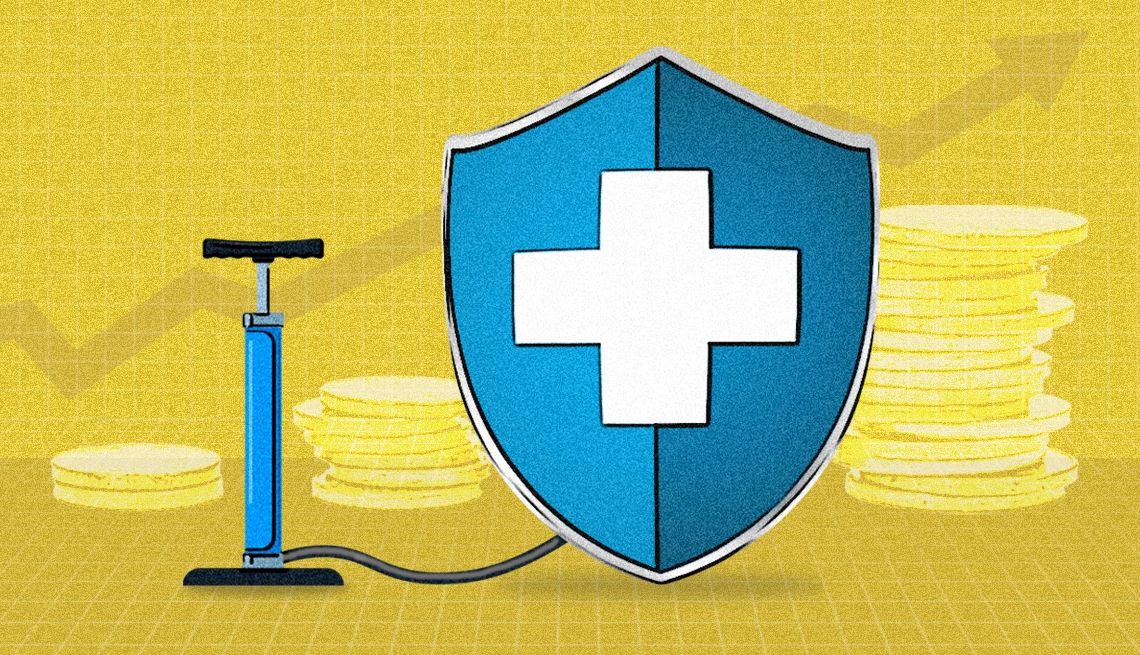AARP Hearing Center


Key takeaways
- Social Security increases are tabulated with inflation in mind.
- Medicare Part B premiums are based on projected health care costs.
- Most people don't pay Part A premiums
- Your premiums may be reduced if the Social Security COLA is small.
- The Medicare high-income surcharge is adjusted for inflation each year.
Every fall, older Americans await the Social Security cost-of-living adjustment (COLA) and Medicare Part B premium announcements, which can affect next years’ budgets significantly.
The COLA is based on year-to-year changes in the consumer price index for Urban Wage Earners and Clerical Workers (CPI-W) for July, August and September. After the Bureau of Labor Statistics announced the figures for August, some experts predicted the 2025 Social Security COLA could increase benefits around 2.5 percent, although real figures won’t be announced until October.
In 2024, the COLA was 3.2 percent. But does the Social Security COLA affect Medicare premiums? Yes and no.
What determines Medicare Part B premiums?
Medicare Part B premiums aren’t based on inflation rates. Instead, they’re dependent on the health insurance program’s projected annual costs, though inflation does play a part in those projections.
Centers for Medicare & Medicaid Services’ (CMS) actuaries estimate per-person Part B spending for beneficiaries 65 and older and set the premium to cover a quarter of those costs. Part B covers doctor’s services, diagnostic tests, durable medical equipment, outpatient care, preventive care and some drugs administered at a doctor’s office.
Part A calculations differ
About 99 percent of Medicare beneficiaries don’t pay premiums for Part A because they or their spouse paid Medicare payroll taxes for at least 40 quarters, the equivalent of 10 years.
Those not working that long pay a portion of the projected costs for Part A, which covers inpatient stays in hospitals and skilled nursing centers, some home care and hospice care. In 2024, the tab is $278 a month for Part A if you or your spouse paid Medicare taxes for 30 to 39 quarters or $505 a month if you or your spouse paid Medicare taxes for fewer than 30 quarters.
“The base premium that most people on Medicare pay is 25 percent of the projected Part B total spending per person,” says Gretchen Jacobson, vice president of Medicare for the Commonwealth Fund.
The 2024 base Part B premium is $174.70 per person. The Medicare Trustees’ Report issued in May estimated that the Part B premium would rise to $185 a month in 2025. The true numbers coming in early October could be different.
“We’ve definitely seen it vary,” says Kevin Pierce, senior consulting actuary for Seattle-based Milliman consultants. The previous year’s Trustees Report projected Part B premiums of $174.80 a month in 2024; they ended up at $174.70. But for 2023, the Trustees Report estimated a $170.10 monthly premium while the actual Part B premium was $164.90.































































More From AARP
7 Medicare Changes You’ll See in 2025
Lower drug costs, coverage changes and new benefits
Medicare Open Enrollment: Everything You Need to Know
When it starts, ends for Medicare and Advantage plans
Try These Tips for Living a Healthier Life
Small changes can add up to big mental and physical results
Recommended for You